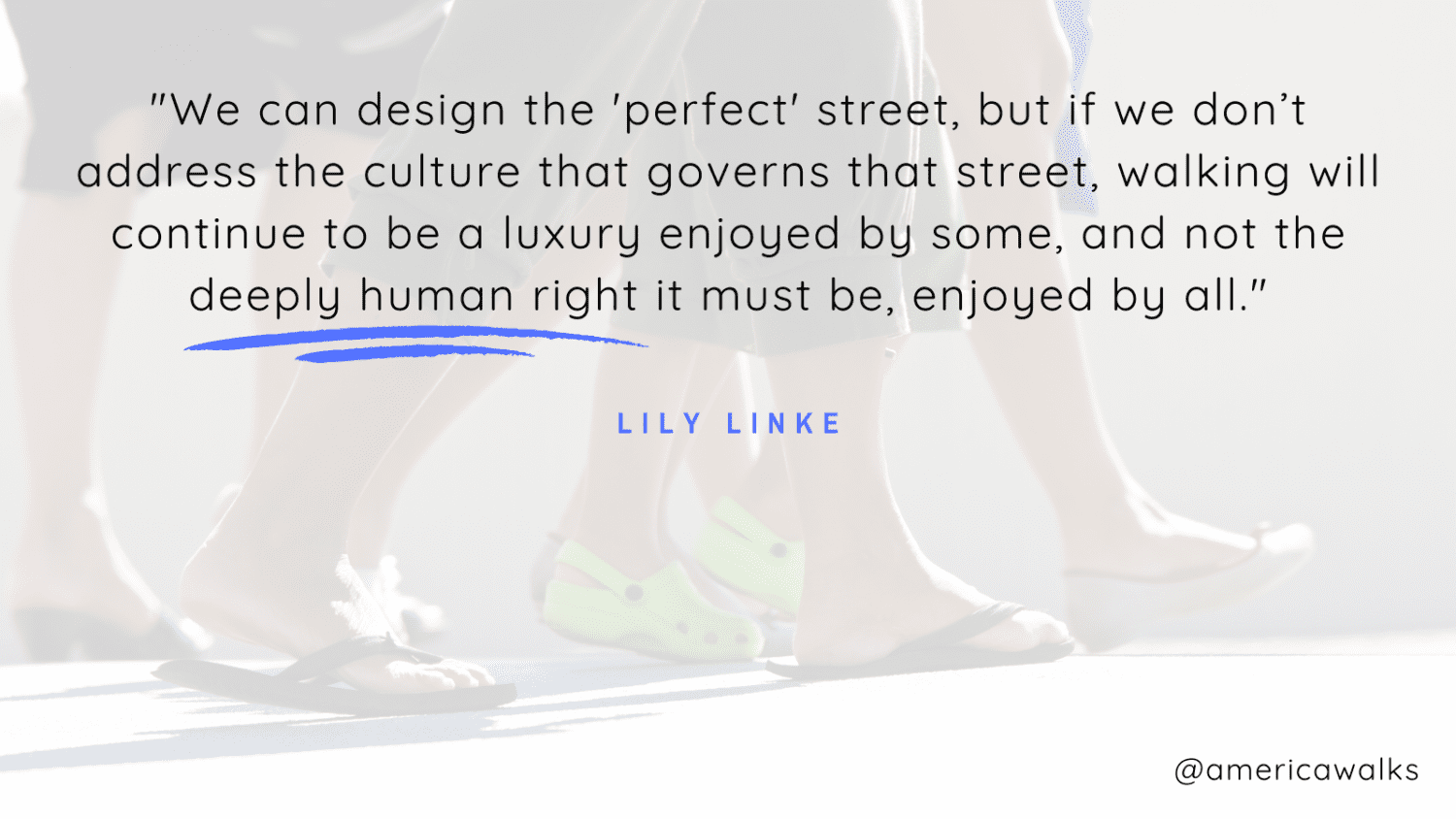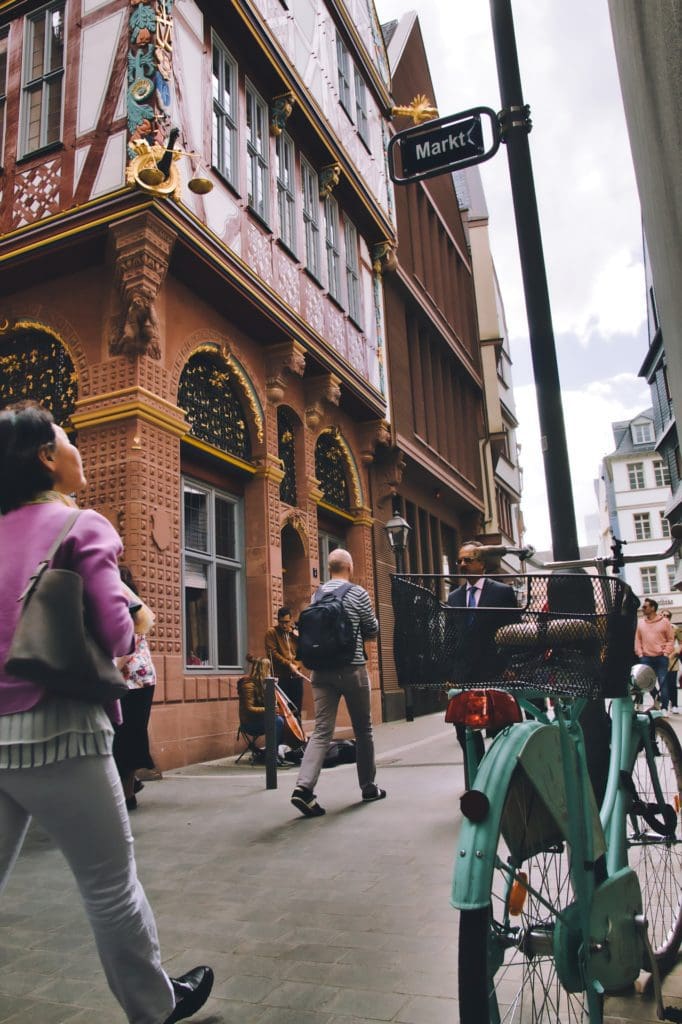Lily Linke is an artist, educator, and urban planner who specializes in community engagement. She recently completed her Masters degree at Tufts University in Urban and Environmental Policy and Planning, and she is currently on the job market! You can reach her at lilymhlinke@gmail.com.
Deciding to focus on walkability for my Masters thesis topic was easy. Finding academic articles that focused on anything but the built environment? Well, that was hard. As I read article after article on block length and intersection density and zoning, I couldn’t help but notice this gaping hole in the conversation – where were the people? Who were the imagined subjects navigating this environment? Are we really making the case that walkability is objective and universal?
The decision about whether or not to walk somewhere, and if so what route to take, is deeply personal, political, social, and cultural. Where I feel safe and comfortable is an amalgamation of my identity, my lived experiences, and the culture of the place I find myself in. We can design the “perfect” street, but if we don’t address the culture that governs that street, walking will continue to be a luxury enjoyed by some, and not the deeply human right it must be, enjoyed by all.
In the United States, Black Americans continue to be harassed, detained, assaulted, and murdered while just trying to move through their daily lives. Trayvon Martin was murdered while walking through his own neighborhood. Ahmaud Arbery was murdered while jogging through an adjacent neighborhood. Dijon Kizzee was murdered for riding his bicycle the wrong way down the street. When sustainable transportation advocates talk about street safety, these murders must be as central to our cause as those of pedestrians killed by cars. Yet many walkability advocates have continued to push for more police presence to enforce traffic safety, ignoring concerns from Black activists and leaders.
It is this reality that drove me to create Foot Notes, an original podcast series examining the intersection of walkability and race. Over the past year, I’ve had the opportunity to interview some of the people at the forefront of this movement, and to imagine new ways of approaching walkability planning, policy and advocacy.

The first episode features Dr. Adonia Lugo, a mobility justice strategist. If you haven’t read her book “Bicycle/Race”, you should drop what you’re doing right now and order it. Dr. Lugo has been making the case that we need a social infrastructure approach to sustainable transportation. Various scholars define social infrastructure differently, but when Dr. Lugo uses it, she is referring to transportation solutions that are enacted through community, culture and social networks. In Foot Notes, I try to imagine what social infrastructure solutions to walkability might look like.
In order to do this, I had to step outside of urban planning, and look to nonprofit leaders, community activists, and artists for answers. I spoke with Garnette Cadogan, an author and urbanist who makes the case that walking is, in and of itself, a form of city building. I spoke with Kenneth Bailey, who co-founded the Design Studio for Social Intervention, about the concept of spatial justice and the practice of public making. I spoke with Karilyn Crockett, the Chief of Equity for the City of Boston, about the nonprofit she founded in 1995, which hired local teenagers to give historical tours of Boston’s South End neighborhood. I also spoke with Nicole Chandler and Sharon Scott, two local volunteers for GirlTrek, a national public health initiative for Black women and girls.
I hope you’ll take the time to listen to the wisdom of these incredible individuals, especially if you are a white walkability advocate whose opinions on the topic have been shaped primarily by other white walkability advocates. There is still so much work to do.


